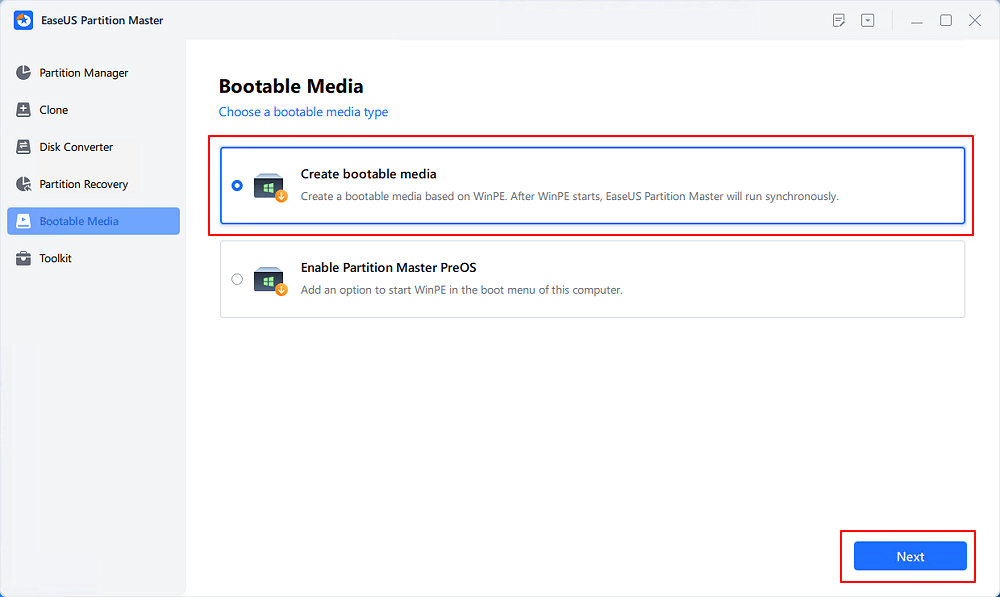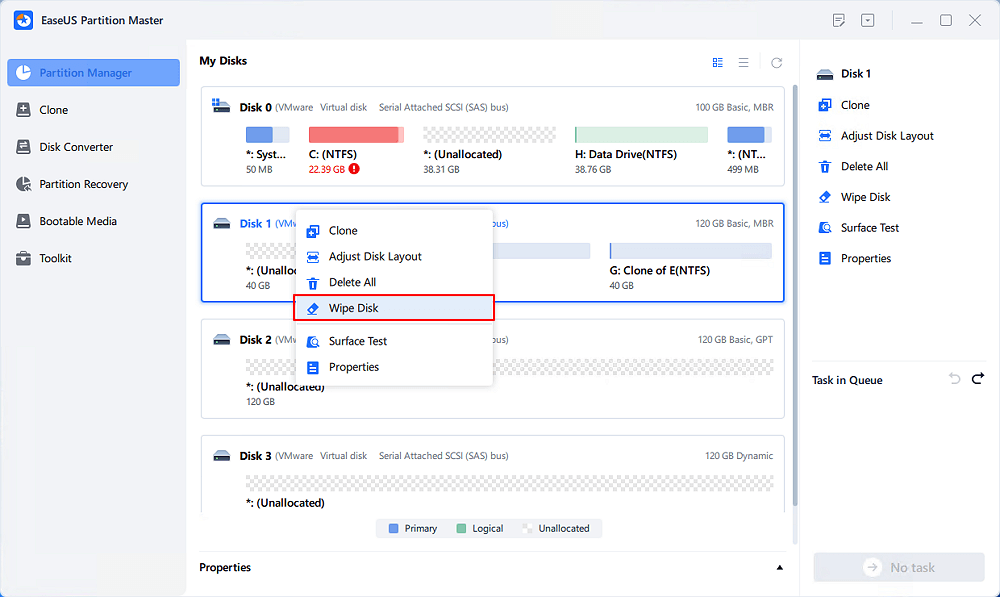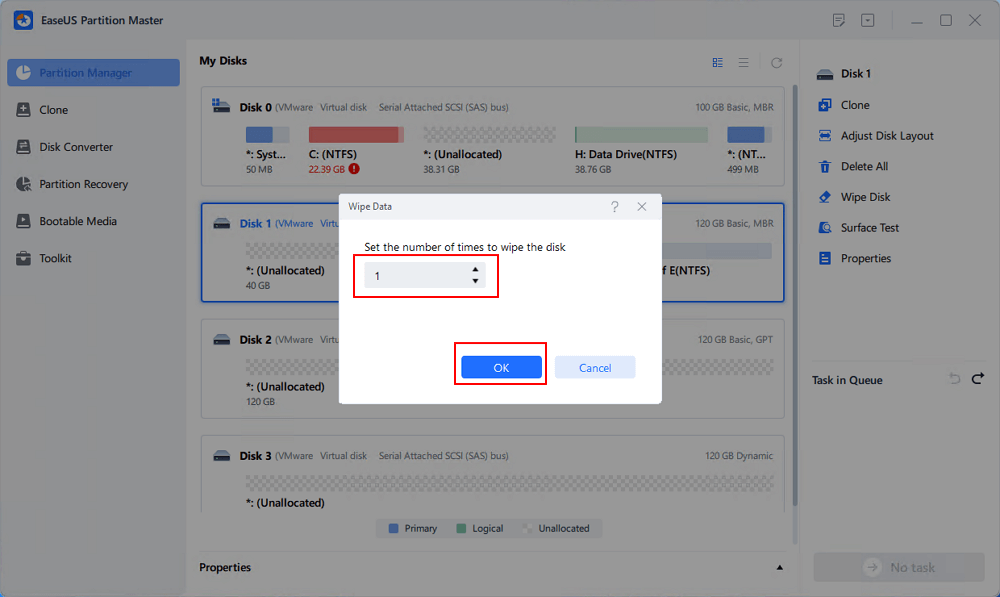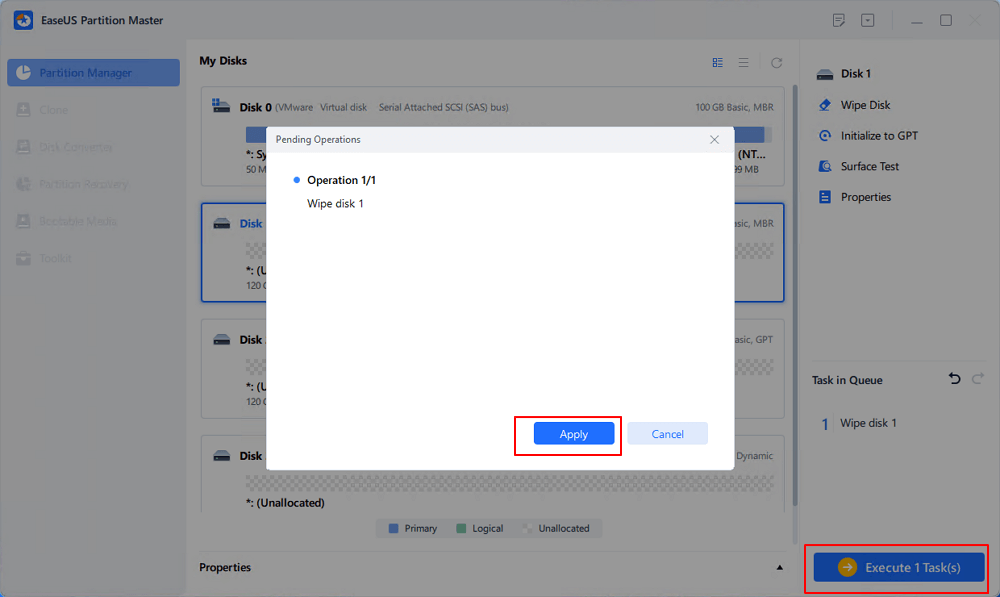Start Your Free Trial!
Sign up to our newsletter, stay updated on news and exclusive offers from EaseUS. Don't worry, if you change your mind, you can unsubscribe at any time, free of charge. We value your privacy (Privacy Policy).
Featured Articles
Secure hard drive disposal: how to erase confidential information on hard drive or SSD?
Can you completely wipe a hard drive and securely erase hard drive to protect your privacy from prying eyes? Be it an old hard drive, a dying SSD, or a not working external hard drive, as long as you have confidential files saved there, the most important thing is to erase the disk before you get rid of them, either selling or discarding.
Therefore, whether you have an old hard drive, SSD, or external hard drive for erasing, you'll need a secure disk eraser for help. This is why this guide comes in.
So what does it mean to securely erase a hard drive?What can it do to hard drive files? Let's make it clear here.
Erasing is an action that completely wipes everything, all saved documents, images, audio files, videos, etc., content from your storage device. There are three ways to erase a disk:

To secure erase hard drive is more than to simply delete or remove files, which actually cannot guarantee the deleted data are unrecoverable. Securely erasing is a process to write 0 to a storage device in a sector or even a cluster level by using disk erasing software. And as a result, all the confidential information and common files will be completely wiped.
So how to securely erase a hard drive, an SSD, or an external hard drive? The ways to securely erase a hard drive or external USB may differ due to variable purposes. Follow the guide here, you'll learn how to correctly select a suitable way to wipe everything on your HDD/SSD safely.
It matters to back up your essential files from the working hard drive which you intend to erase in advance. Once you execute the secure erasing operation, you can never find back your files again.
Here we listed 4 different situations that most disk users need to erase their hard drive, select one that fits your current case and follow the respective guide to wipe everything now:
Also works to: secure erase external hard drive in Windows 10/8/7.
Here we'll introduce two normal ways to help safely erase your target drive:
For beginners or easier solutions, hard drive wipe software is recommended.
| Pros: The easiest way to erase a disk. | Cons: Not Free |
To most beginners, the disk erasing software is the most economic way to safely wipe a disk, making all files unrecoverable within a few clicks. To save your time in comparing all disk erasers on the market, we'll show you how to directly wipe a hard disk using EaseUS Partition Master.
How to Use:
We've set two options for you to wipe data. Choose the one you need.
Option 1. Wipe Partition
Option 2. Wipe Disk
| Pros: Free. | Cons: Complex for beginners, false command will cause serious problems. |
Note that this method is designed for experienced Windows users, if you obtain merely no computing skills, revert to try Method 1. Also, make sure that you follow the steps guide here carefully. Let's go.
How to Use:
Step 1. Press Windows + S keys, type command prompt. Right-click Command Prompt from the result and select Run as Administrator.
Step 2. Click Yes to allow Command Prompt to run on your PC.
Step 3. Type diskpart and hit Enter.
Step 4. On the Diskpart window, type the following command lines one by one and hit Enter each time:

Step 5. Wait patiently, type exit when the erasing process completes.
Close Command Prompt and now your disk is empty with no data existing.
After trying Method 1 or Method 2, your disk is now 100% clean and secure for reuse or sell now.
Also works to: Wipe old OS disk for new usage.
To safely erase a hard drive with an operating system installed on it, you can't directly erase it using the above-presented solutions. Due to OS protecting mechanism, Windows system doesn't allow any users to delete, format, or erase the OS drive on a computer.
To reach the disk erasing goal, you'll need a professional disk erasing tool for help. EaseUS Partition Master with its bootable disk can make the goal come true.
Step 1. Correctly connect a USB drive, flash drive, or a CD/DVD disc to your computer. Then, launch EaseUS Partition Master, go to the "Bootable Media" and click "Create bootable media", click "Next".

Step 2. You can choose the USB or CD/DVD when the drive is available. Once made the option, click "Proceed".
If you do not have a storage device at hand, you can also save the ISO file to a local drive, and later burn it to a storage media.

Step 3. Connect the WinPE bootable disk to the computer. Restart your computer and press F2/Del at the same time to enter BIOS. Set to boot the PC from "Removable Devices" (bootable USB disk) or "CD-ROM Drive" (bootable CD/DVD) beyond Hard Drive. Press "F10" to save and exit.
Step 4. Install and launch EaseUS Partition Master. Select the HDD or SSD which you want to wipe. And right-click to choose "Wipe Disk".

Step 5. Set the number of times to wipe data. You can set to 10 at most. Then, click "OK".

Step 6. Click "Execute 1 Task(s)" and then click "Apply" to start wiping data.

Also works to: Wipe a failing OS disk that caused the computer unbootable.
If your computer is dead due to a dying or not working hard drive, you can wipe the hard drive to reinstall an OS to bring your computer back to life.
Note that if you have vital files on the disk, you should first recover data from the dead computer at first. Follow to Recover Files from Dead Laptop Hard Drive for help.
After safely getting data out of the drive, you can turn to EaseUS Partition Master with its bootable disk for help.
Just revert to steps shown in the second situation of wiping disk with OS installed on for help.
It's not recommended that you directly dump the dead hard drive or SSD. Your data or confidential information may get lost when someone who have ways of repairing a dead disk.
Therefore, to take care of your privacy and data security on the dead disk, you must know how to deal with the dead disks. Here are two tips for you to try:
If you have important data saved on the drive, you can take the disk for repair first. Let the professionals get out of your data and wipe the drive. But if you don't care about the data, not planning to repair it, you should directly break it in manual ways, for example, to drill holes on the disk or to smash the disk with a hammer.
Accordingly, when you search hard drive wipe tool or hard drive eraser on Google, you'll certainly get recommendations offered by different software or hardware manufactures who are providing services to erase disks.
Here, we compared third-party software and Windows built-in tool - Command Prompt, and you can directly figure out which is better for wiping a drive:
| Comparison | Disk Eraser/Disk Wipe Software | Command Prompt |
|---|---|---|
| Pros |
|
|
| Cons |
|
|
To sum up, most disk eraser software is not free but useful in offering the easiest solution to wipe a hard drive, an SSD, or an external storage device. If you prefer an easy way to wipe a disk, take a disk wipe program for help. EaseUS Partition Master with its Wipe feature can be your best shot.
On this page, we explained what does it mean to erase or securely erase a hard drive. When you replaced a computer disk, or you want to sell the old disk, or protect your privacy from information theft, wipe a hard disk is important.
Note that erasing a disk is no longer difficult with proper solutions. Follow the provided fixes on this page to erase your HDD, SSD, or external hard disk now. You can make it all by yourself.
Was This Page Helpful?
Updated by Tracy King
Tracy became a member of the EaseUS content team in 2013. Being a technical writer for over 10 years, she is enthusiastic about sharing tips to assist readers in resolving complex issues in disk management, file transfer, PC & Mac performance optimization, etc., like an expert.
Related Articles
How to Merge Partitions by Disk Management and Free Partition Software
![]() Daisy/Apr 28, 2025
Daisy/Apr 28, 2025
MBR VS GPT | What's the Difference and Which Is Better
![]() Tracy King/Apr 28, 2025
Tracy King/Apr 28, 2025
Windows 11/10/8/7 Won't Boot from SSD
![]() Tracy King/Apr 28, 2025
Tracy King/Apr 28, 2025
How to Force Delete Files and Folders Using CMD in Windows
![]() Cici/Apr 28, 2025
Cici/Apr 28, 2025
CHOOSE YOUR REGION
Start Your Free Trial!
Sign up to our newsletter, stay updated on news and exclusive offers from EaseUS. Don't worry, if you change your mind, you can unsubscribe at any time, free of charge. We value your privacy (Privacy Policy).
Start Your Free Trial!
Sign up to our newsletter, stay updated on news and exclusive offers from EaseUS. Don't worry, if you change your mind, you can unsubscribe at any time, free of charge. We value your privacy (Privacy Policy).